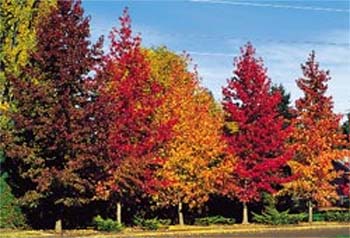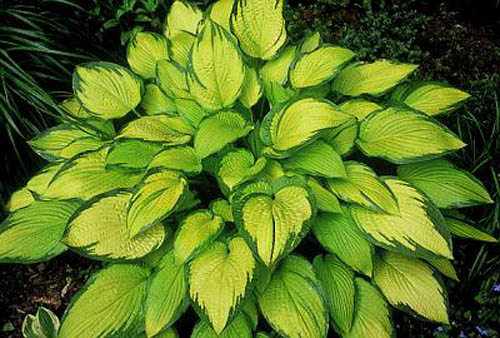Tomatoes are our most popular vegetable (actually they are a fruit that was once considered poisonous) found in the home garden. It is one of the easiest plants to grow. More seed catalog pages are devoted to this plant than any other. We have bush tomatoes, vine tomatoes, and even tree tomatoes. They come in all shapes and sizes, from the mammoth Beefsteak to the lowly Pearl. Colors range from the almost black “Black Knight” to the light green “Granny Smith.” Although they are a warm climate plant, originating in Mexico, tomatoes can be grown outdoors in all 50 states.
For this month’s Yard Talk we will be talking about the round red slicing tomato. Future Yard Talks will be devoted to the other varieties such as the cherry, low-acid yellows, sauce tomatoes, and colorful specialty plants. We are also limiting ourself to growing tomatoes from seedlings rather than seeds. Growing tomatoes from seeds can be an excellent means of obtaining select plants but is a subject we will also cover later.
The first thing we need to consider is site selection. Tomatoes like full sunlight and warmth, a little wind protection is also appreciated. A sunny spot on a hillside against a stone wall is ideal. We also like to grow our plants in raised beds to improve drainage and air circulation. Raised beds also makes picking easy. The rock wall stores heat and the hillside elevation helps protect the tomatoes from frost. Never plant tomatoes near nut trees such as walnut or butternut as all parts of the trees produce toxins that can be fatal. Even the roots are harmful long after the trees have been removed.
Tomatoes need fertile soil to produce well; although, overfeeding will grow large plants and reduce fruit production. We like to prepare the bed to a depth of 18-24 inches, working in lots of organic matter. Each season we add a 6-8 inch layer of compost, chopped leaves, and blood meal. Tomatoes respond well to inorganic fertilizer applications, especially phosphorus. Apply 2 to 3 pounds of fertilizer, such as 5-10-10, 5-20-20, or 8-16-16 per 100 square feet of garden area. Work the fertilizer into the soil about two weeks before planting and then cover with a light mulch.
Next, we must choose the varieties we will be growing. Other area gardener’s experience can help you here, they know what has worked in their garden in the past. A good garden center can also tell you what preforms best in your area. Seed companies such as Burpee’s, Johnny’s or Territorial’s offers a wealth of information that can make the selection easier. For information on organic varieties visit Seeds of Change web site. Some of these seed companies even offer seedlings for sale on line or mail-order.
There are two kinds of tomatoes, determinate and indeterminate. Determinate tomatoes stop growing and flowering when they reach a certain height. People in short season areas like to plant these kinds of tomatoes because they produce lots of fruit for a short period. Unfortunately, the key word here which is often overlooked is “short period.” We have often heard people say “I do not know what happened all of a sudden all my plants died.” Determinate tomatoes tend to take up less space than the indeterminate varieties. Indeterminate tomatoes continue to grow and fruit until the first frost kills them. We always try to plant a few varieties of determinate tomatoes, for an early crop, followed by a main crop of several indeterminate varieties. These generally require staking, cages, or better yet a trellis.
Actually, we recommend supporting for all varieties. Supporting the plants helps prevent disease, keeps the fruit cleaner, and makes maintenance and harvesting easy. Tomatoes can be supported with a variety of staking methods. A cage made out of 5 foot long sheet of concrete reinforcing mesh, which was rolled into a cylinder and staked into the ground works well. Make sure the size of the holes in the mesh is wide enough for your hand and the tomato can go through at harvesting time. Smaller varieties can be supported with branches or bamboo poles, weaving vine or raffia around the branches. Last season we built a 60 foot trellis out of ten foot 4 x 4’s and 1 x 3 stringers that worked out extremely well. Our plants were taller than our home, the yield was the best ever, and we still were harvesting tomatoes after the first snow.
Choose a tomato that is resistant to diseases that are present in all gardens soils such as verticillium wilt, Fusarium wilt, Nematodes or Tobacco mosaic virus. The plant tag will have initials such as V. F. N. or T. to indicate resistance to these diseases.
Key to Common Tomato Resistance:
| EB – Early Blight |
| F1 – Fusarium wilt, race 1 |
| F2 – Fusarium wilt, race 2 |
| LB – Late Blight |
| N – Nematodes |
| TMV – Tobacco Mosaic Virus |
| ToMV – Tomato Mosaic Virus, strains 0, 1, and 2 |
| V – Verticullium wilt, race 1 |
Whenever possible, practice a rotational planting program. Also, destroying all the vines at the end of the year is a good practice.
Tomatoes have few insect pests. Flea beetles can be a problem early in the season. Use Rotenone or a crop row cover to discourage them if necessary. Tomato horn worms can be controlled with Bacillus thuringienses although most can be easily picked off.
Some varieties we have that preformed well in our garden are:
- Burpee’s Big Girl Hybrid: – Combines the quality of Big Boy with disease resistance. Large, smooth, crack-resistant fruits. Mouth-watering flavor. Proven tops for performance, flavor and wide adaptability.
- Brandywine: – This is the best known of all heirlooms. The fruit has a very large beefsteak shape and grow on unusually upright, potato-leaved plants. The fruits set one or two per cluster and ripen late. At summer’s end, Brandywine’s qualities really shine when it develops an incredible fine, sweet flavor. Fruits average 1 lb. each.
- Celebrity Tomato: – All-purpose variety with superb flavor, disease resistance and heavy yield in 70 days. All-purpose variety with superb flavor, disease resistance and heavy yield on determinate plants. Crack-resistant fruits average 7 oz.
- Burpee’s Big Boy Hybrid: – Enormous productivity and gorgeous, perfect, extra-large scarlet fruit. What has kept it ahead of the pack all these years is its wonderful aroma and rich flavor. The large fruit average 10 oz., with many more than 1 lb. Healthy, indeterminate vines.
- Rutgers Heirloom: – Its flavor, both for slicing and cooking are unequaled. Red fruits are slightly flattened. Tall vines, fusarium resistant.
- JOHNNY’S 361: – Delicious beefsteak type. This early tomato has established a following in the Northern U.S. and Canada. Johnny’s 361’s slightly flattened fruits are firm and medium-large, deep red, and delicious. The plant is compact and has a heavy early set. Determinate.
- Stupice Red: – Extremely early, prolific variety with exceptional taste. Sweet and juicy small to medium-sized fruits grow on compact vines, and are glossy red. Its potato-like foliage protects 2-3 inches in diameter fruits from sun scald. 2-4 foot plant. Indeterminate.
- Better Boy: – Huge, delicious, red fruits many 1 lb. each. Good leaf coverage. Excellent disease resistance.
- Bucks County Hybrid: – It’s got wonderful old- fashioned flavor and melt-in-your-mouth texture. The breeders took a luscious and richly flavored heirloom and added modern high yields, early ripening and a perfect shape.
With a deep root system, tomatoes enjoy a deep watering, down to at least 18 inches. It’s better to water heavily than just sprinkling each day. At the same time, they do not like standing in water. The top inch needs to dry out between watering. Consistent watering prevents cracking and end rot. We prefer using a drip irrigation system with our tomatoes.
Select stocky, dark green tomato plants without fruit, to set out in the garden. Be sure there are no spots or insects. Choose several varieties of tomatoes to plant in your garden to insure against crop failure. We always try to plant on a cloudy, rainy day, after May 15th here in Zone 5. Plant tomatoes deeply and bury most of the stem, even on its side, up to the first set of true leaves. The buried stem will send out deeper roots. This makes sturdier plants because new roots will grow along the stem that has been buried. If you have acid soils or have been bothered by blossom end rot, a handful of bone meal should also be added to each plant. Space determinate variety’s 18-24 inches apart and indeterminate variety’s 20-30 inches apart. Allow 36 inches between rows. Water immediately after planting.
Remove the suckers or side shoots that grow in the joints between the main stem and leaves until the plant sets the first fruits. After that, allow some of the suckers to grow to provide shade for ripening tomatoes.
Tomatoes need a proper balance of nutrients throughout their growing cycle. Inorganic fertilizer should include on its label the Nitrogen, Phosphorous and Potassium ratio, such as 5-10-10 or 10-10-10. Sprinkle the fertilizer mix approximately one foot from the base of the tomato plant, make sure you encircle the entire plant. Work the fertilizer lightly into the soil’s surface or apply a layer of mulch. Fertilize every 15 to 21 days. Avoid contacting any part of the tomato plant with your fertilizer as this could burn the plant. Lately we have tested a balanced time release fertilizer that slowly breaks down over a 6-9 months period. While more expensive, it takes some guess work out of fertilizing.
Let’s face it, tomatoes are fun to grow! There just is something rewarding about being able to easily harvest armful after armful of beautiful shinny red tomatoes. They also taste good.



